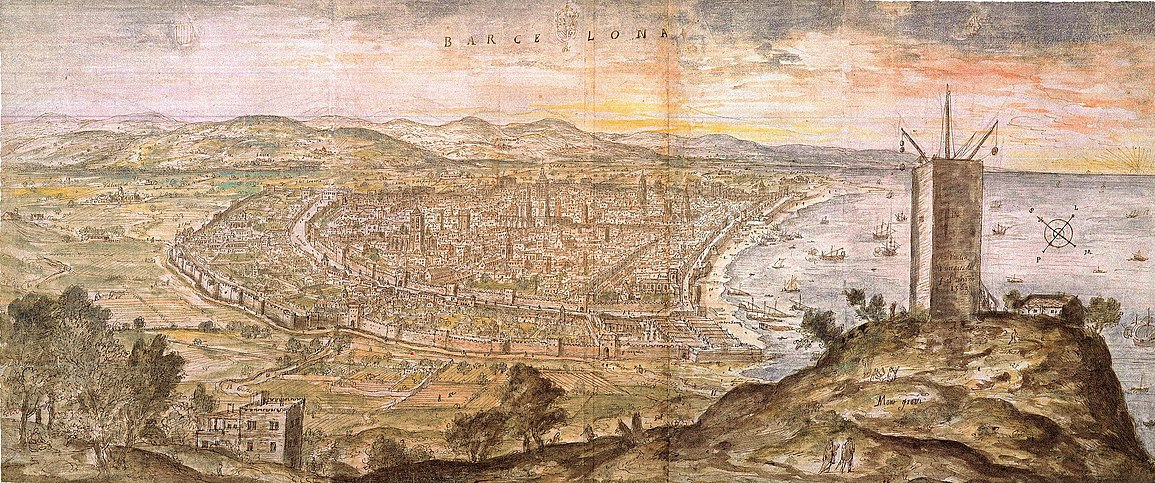Possibly a world apart.
The marriage of Ferdinand II of Aragon and Isabella I of Castile in 1469 united the two royal lines. Madrid became the center of political power while the colonisation of the Americas reduced the financial importance (in relative terms) of Mediterranean trade.
The unification of the Spanish kingdoms and the riches of the New World were not without political repercussions for Europe, leading ultimately to the War of the Spanish Succession from 1701 to 1714. The Catalan nobility sided with the Habsburgs against the Bourbon Philip V, which led to the abolition of Catalan autonomy with the last of the Nueva Planta decrees in 1716, and to the diminution of the political influence of the city of Barcelona in Spain.
However, from the end of the 18th century, the position of Barcelona as a Mediterranean port and the proximity of lignite deposits in the Berguedà became important factors in the Industrial Revolution. Catalonia as a whole, and Barcelona in particular, became important industrial centres, with an increase in wealth (if not political power)
THE ARTS SOCIETY ACCREDITED LECTURER

Mr Ian Cockburn
Art historian with a BA (Birkbeck College) in art history and an MA (Courtauld Institute of Art) in medieval Spanish art history. Specialist in the nearly 800 years of Moorish occupation and Christian reconquest of medieval Iberia.
Founder and director of an art tours company, specialising in guided cultural tours in Spain, plus lecturing in London at institutions such as the V&A, SOAS, Christies Education, and the London Art History Society. Formerly a Chartered Accountant and senior manager in multi-national IT companies, with extensive public-speaking experience.
OTHER EVENTS
A comparison between two of the greatest English painters.
The day will include studies of Sickert, Wilde, Beardsley, et al. The price is £35 per person.





